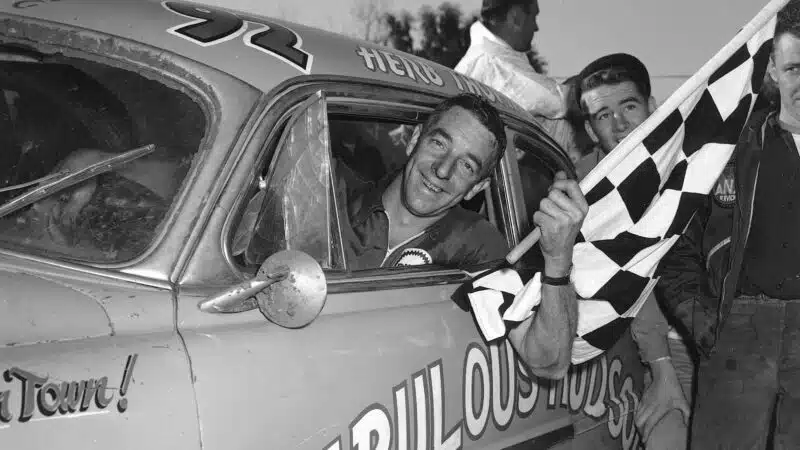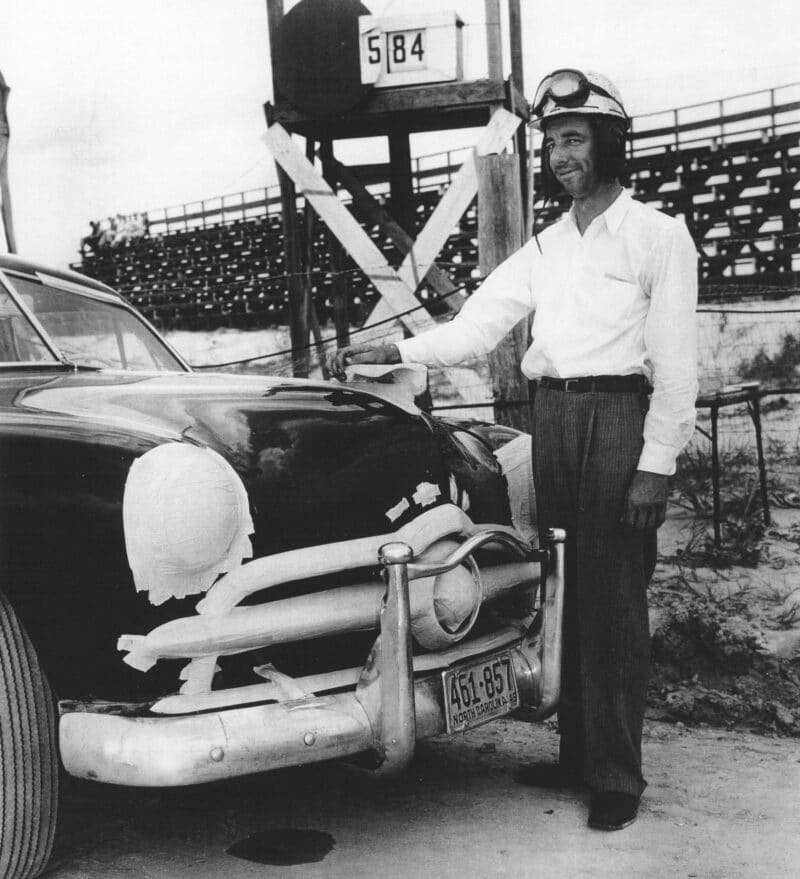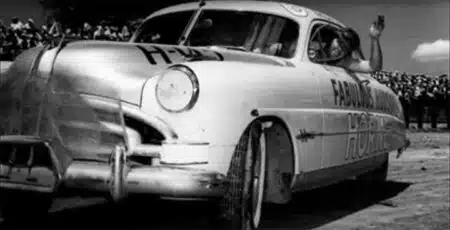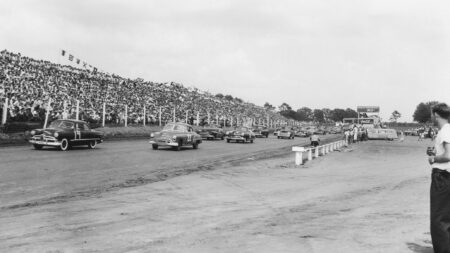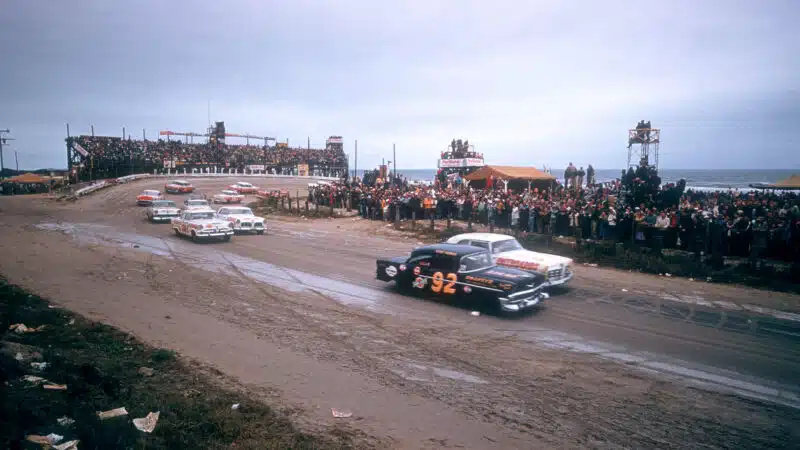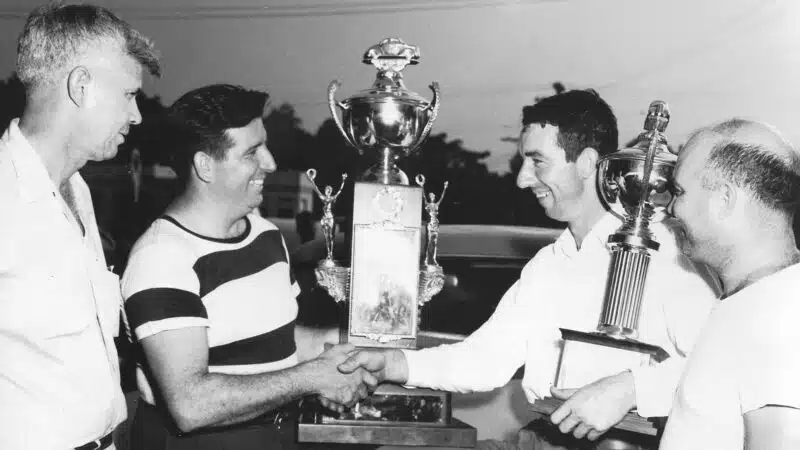It was Marshall Teague who had recognised the competition potential of this sturdy and streamlined coupe, low-slung and, thanks to a 5-litre side-valve straight-six, sufficiently powerful and torquey. Having persuaded Hudson to provide technical support – a NASCAR first – he convinced Thomas to ditch his Plymouth midway through 1951.
Thomas’s Hudson retired first time out because of overheating – but after modifications he used it to win the Southern 500 at Darlington, and thereafter went on a late tear that swept him to the title.
The following year he was matched in terms of wins – eight apiece – but shaded by 106 points by Flock, also driving a ‘step-down’ Hornet.
Thomas put matters right in 1953.
Having already won twice, victory in Round 12 at Powell Motor Speedway – a half-mile dirt oval in Columbus, Ohio – triggered an incredible sequence of seven wins, five seconds, three thirds and a brace of fourths: from Raleigh to Hickory, stopping at: Shreveport, Pensacola, Langhorne, High Point, Wilson, Rochester, Spartanburg, Morristown, Atlanta, Rapid City, North Platte, Davenport, Hillsboro, Weaverville and Virginia Beach.
This amazing run ‘ended’ with a classified fifth place in the Southern 500 – having led 124 laps and retired because of engine failure with just 10 (of 364) to go.
That second title was but a formality, sealed by back-to-back victories at Bloomsburg and Wilson.
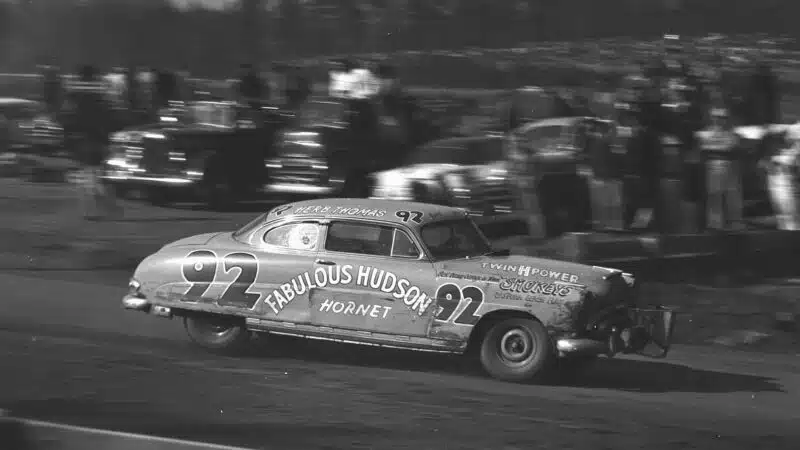
Thomas – at Jacksonville – took a second Southern 500 victory in 1954 but missed out on the title
ISC Archive via Getty Images
Thomas matched that record round-dozen win count – which included his second Southern 500 victory – in 1954, but this time was shaded by 283 points, by the consistent Lee Petty.
The Hornet was losing its sting. Hudson lacked the finances and resources to capitalise on its racing successes and, squeezed ever more tightly by the Big Three in an increasingly buyers’ market, had begun the death spiral that would see it cease production before the decade’s end.
Thus Thomas was at the wheel of a Buick when he suffered the injurious crash at Charlotte that cost him three months of the 1955 season.
He not only promised to return but also to do so as a winner.
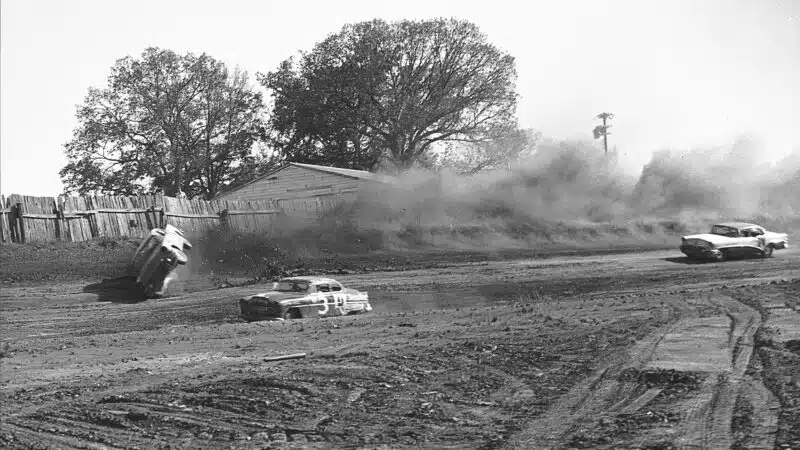
Thomas rolls his Buick at Charlotte, putting him out of the 1955 season for three months
ISC Images via Getty Images
His third Southern 500 victory was achieved with Yunick’s unfancied Chevrolet 150’s blend of Utility Sedan and Super Power Pack options – plus whatever else lay secreted within. An excellent judge of pace, Thomas gradually overhauled more powerful, bigger and thirstier machinery — including Kiekhaefer’s — by completing the distance on a single set of Firestones.
He started the 1956 season – in November 1955! – as the championship favourite, an expectation reinforced by his switching in April to Kiekhaefer’s Ray Fox-tended Chryslers and Dodges.
His last edge of speed might have been dulled by the accident, but Thomas remained a fierce competitor to be reckoned with.
